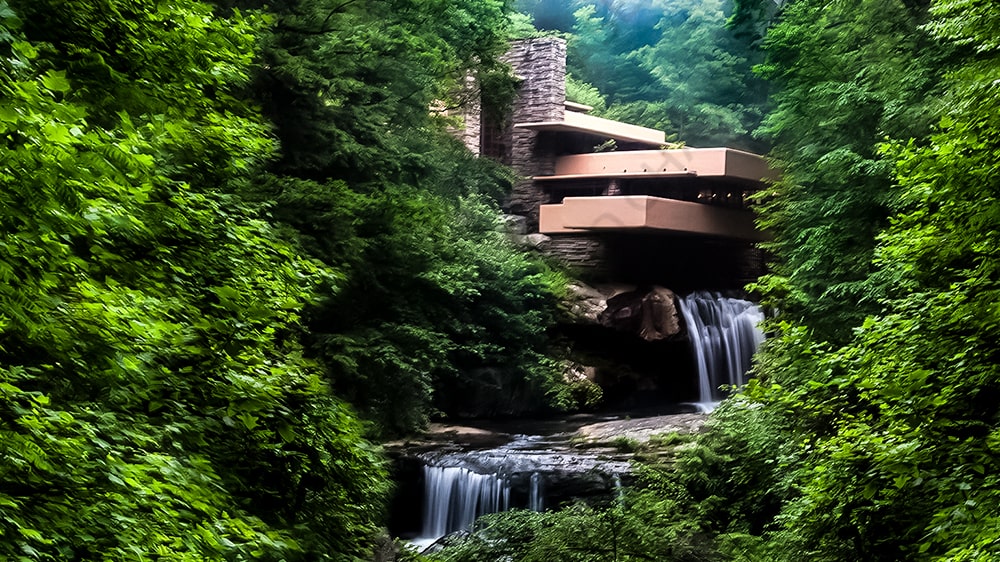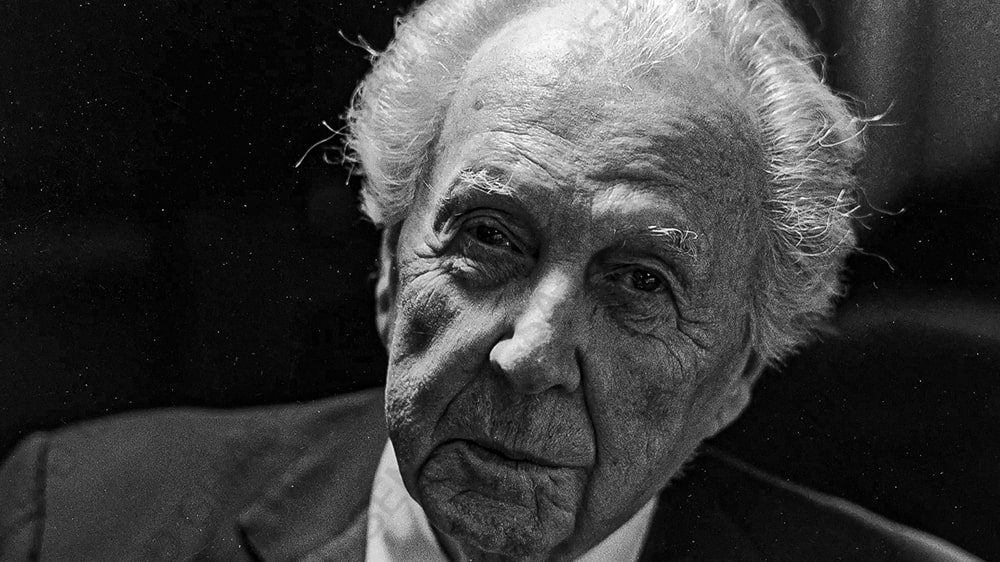
Frank Lloyd Wright was not just an architect; he was a visionary, a trailblazer, and a true rebel in the world of design. His unwavering pursuit of innovation and his determination to challenge conventional norms left an indelible mark on the architectural landscape, forever changing the way we perceive the built environment.
Early Life and Influences
Born on June 8, 1867, in Richland Center, Wisconsin, Frank Lloyd Wright was raised in an environment that fostered his creative spirit from an early age. His mother, Anna Lloyd Jones, a well-educated teacher, instilled in him a love for nature and a deep appreciation for the arts. His childhood spent in the rolling hills of Wisconsin’s Driftless Area would later serve as a profound influence on his organic architectural style.
Wright’s formal education in engineering and architecture at the University of Wisconsin-Madison laid the foundation for his technical expertise. However, it was his insatiable curiosity and his determination to forge his own path that truly defined his creative journey.
The Prairie School: Redefining American Architecture
In the early years of his career, Wright worked for the renowned architect Louis Sullivan, who became a mentor and a significant influence on his design philosophy. It was during this time that Wright developed his distinctive “Prairie School” style, characterized by horizontal lines, flat or hipped roofs with broad overhanging eaves, and a seamless integration with the surrounding landscape.
Homes like the Willits House, the Robie House, and the Dana House exemplified Wright’s Prairie School aesthetic, which revolutionized American residential architecture. These structures were not merely buildings; they were living, breathing entities that embraced their natural surroundings and encouraged a harmonious relationship between the built environment and the great outdoors.
A Visionary and a Rebel
Throughout his life, Frank Lloyd Wright remained a steadfast rebel, challenging societal norms and defying conventions at every turn. His personal life was as unconventional as his architectural designs, marked by tumultuous relationships, scandalous affairs, and a relentless pursuit of his artistic vision.
Yet, it was this very rebellion, this unwavering commitment to his ideals, that fueled Wright’s creativity and propelled him to heights few architects have ever achieved. His willingness to take risks, to push boundaries, and to question the status quo paved the way for some of the most iconic and influential architectural works of the 20th century.
The Unbelievable World of Frank Lloyd Wright
1.The Tragic Loss that Fueled His Creativity
In 1914, a horrific event occurred that would shape Wright’s life and work forever. A servant set fire to his beloved home, Taliesin, killing seven people, including his mistress and her two children. Wright was devastated, but this tragedy fueled his creativity, leading him to rebuild Taliesin and continue his architectural pursuits with renewed vigor.
2.The Scandalous Love Affairs
Frank Lloyd Wright was not only a brilliant architect but also a notorious womanizer. He had numerous affairs throughout his life, including one with Mamah Borthwick Cheney, the wife of a client, which caused a major scandal in the early 1900s. Wright’s unconventional personal life often overshadowed his professional achievements.
3.The Unconventional Family Life
Wright fathered seven children with three different wives, and his family dynamics were anything but traditional. He often had multiple wives and mistresses living together at his homes, leading to a complex and tumultuous family life that was considered shocking for the time.
4.The Gravity-Defying Cantilevers
Wright’s iconic Fallingwater house, built over a waterfall in Pennsylvania, features daring cantilevers that extend the terraces dramatically over the rushing waters below. These cantilevered sections appear to defy gravity, and many engineers at the time believed the structure would collapse, but it has stood the test of time and remains a marvel of engineering.
5.The Eccentric Working Habits
Wright was known for his unconventional working habits. He often designed buildings while lying on the floor, using the ceiling as his drafting board. He also had a peculiar habit of wearing a signature cape and walking around with a cane, even when he didn’t need one, adding to his eccentric persona.
6.The Architectural Trailblazer
Wright was a true pioneer in the field of architecture, introducing many innovative concepts that were far ahead of their time. He was one of the first architects to incorporate open floor plans, blurring the lines between indoor and outdoor spaces, and emphasizing the harmony between buildings and their natural surroundings.
7.The Prolific Output
Despite the turmoil in his personal life, Wright was incredibly prolific, designing over 1,000 structures throughout his career, including houses, office buildings, churches, and museums. His architectural legacy spans decades and continues to inspire architects around the world.

Fallingwater: A Masterpiece Over the Waterfall
Wright’s crowning achievement, Fallingwater, solidified his reputation as a true master of organic architecture. Built in 1935 over a waterfall in southwestern Pennsylvania, this remarkable residential structure defied conventional building practices and became an iconic symbol of Wright’s genius.
With its cantilevered terraces extending dramatically over the rushing waters below, Fallingwater seamlessly blended with the natural contours of the site, creating a harmonious fusion of man-made and natural elements. This masterpiece not only showcased Wright’s innovative structural engineering but also demonstrated his unparalleled ability to integrate architecture with the surrounding environment.
A Harmonious Blend of Nature and Architecture
Nestled in the picturesque Bear Run valley of southwest Pennsylvania lies one of the most remarkable architectural wonders of the 20th century – Fallingwater, the residential masterpiece designed by the renowned architect Frank Lloyd Wright. This iconic structure, built in 1935 for the Kaufmann family, seamlessly integrates with its natural surroundings, defying traditional building conventions and captivating visitors from around the world.
The Genius of Frank Lloyd Wright
Frank Lloyd Wright, often regarded as America’s greatest architect, was a visionary known for his “organic architecture” philosophy, which aimed to create buildings that harmoniously coexisted with their environment. Fallingwater stands as the pinnacle of this philosophy, a testament to Wright’s genius and his ability to push the boundaries of design.
A Daring Concept: Building Over a Waterfall
When the Kaufmann family approached Wright with the idea of constructing a weekend home on their pristine land, the architect proposed an audacious plan – to build the house directly over the rushing waters of Bear Run. This daring concept challenged conventional thinking and set the stage for an architectural masterpiece that would forever change the way we perceive the relationship between built structures and nature.
Cantilever Construction: Defying Gravity
One of the most remarkable aspects of Fallingwater is its use of cantilevered terraces, which extend dramatically over the waterfall. These reinforced concrete terraces appear to defy gravity, creating the illusion that the house is floating above the cascading waters below. Wright’s innovative use of cantilevers allowed him to integrate the building seamlessly with the natural contours of the site, creating a harmonious fusion of man-made and natural elements.
Natural Materials and Organic Forms
Throughout Fallingwater, Wright incorporated natural materials such as stone, concrete, and wood, blending them seamlessly with the surrounding landscape. The organic forms of the building, with its low-lying horizontal lines and layered terraces, echo the natural contours of the site, making it appear as if the structure has grown organically from the earth itself.
A Living Connection with Nature
One of the most captivating aspects of Fallingwater is the way it connects its inhabitants with the natural world. Large windows and terraces provide breathtaking views of the waterfall and surrounding forest, while the sound of rushing water permeates every room. Visitors are encouraged to explore the outdoor spaces, where they can fully immerse themselves in the natural beauty of the site.
Sustainable Design Ahead of Its Time
Fallingwater was not only a masterpiece of architectural design but also a pioneering example of sustainable construction. Wright’s use of local materials, passive cooling techniques, and integration with the natural landscape anticipated many of the principles of modern-day green building practices, making Fallingwater a true forerunner in sustainable architecture.
Conclusion
Today, Fallingwater stands as an enduring symbol of architectural innovation and human ingenuity. Recognized as a National Historic Landmark and a UNESCO World Heritage site, it continues to inspire architects, designers, and nature enthusiasts from around the globe. Visiting Fallingwater is a transformative experience, a journey through time and space that celebrates the harmony between nature and human creativity.
Whether you’re an architecture enthusiast, a lover of nature, or simply someone in search of awe-inspiring beauty, Fallingwater promises an unforgettable encounter with one of the world’s most remarkable architectural achievements.
